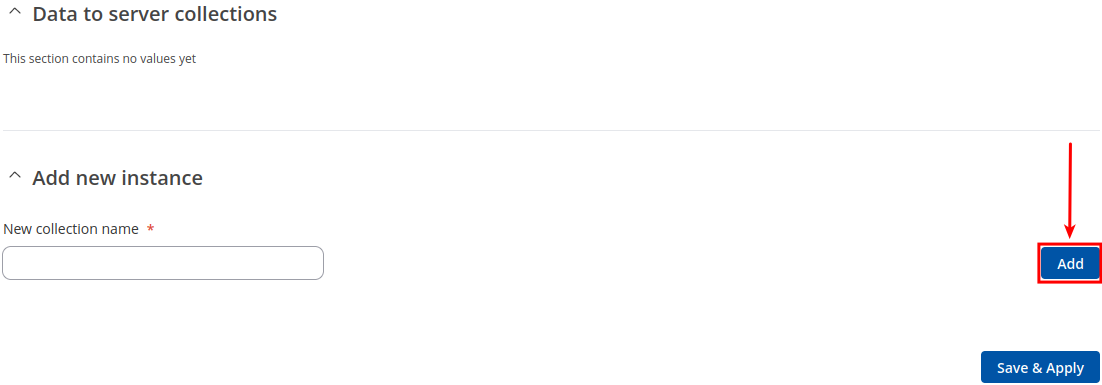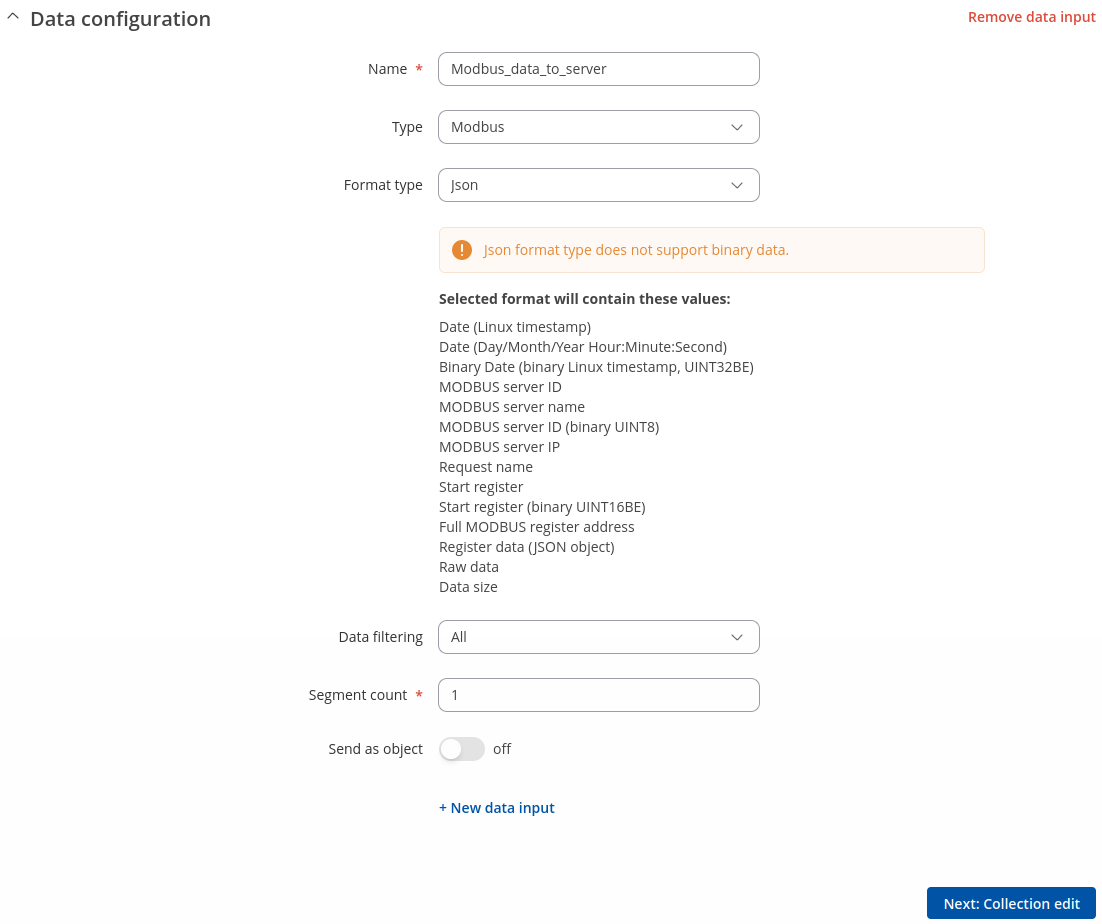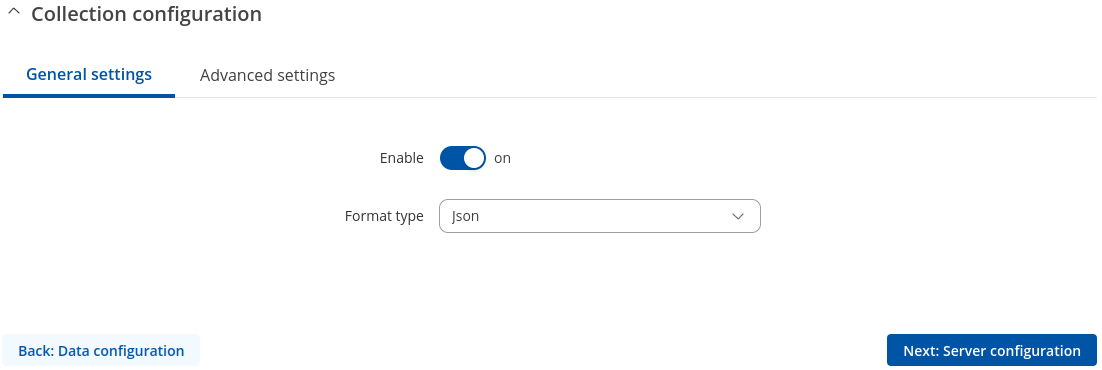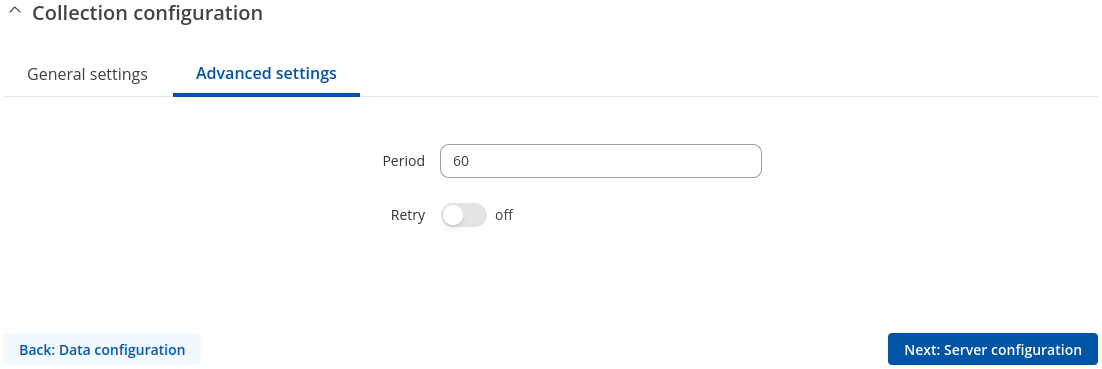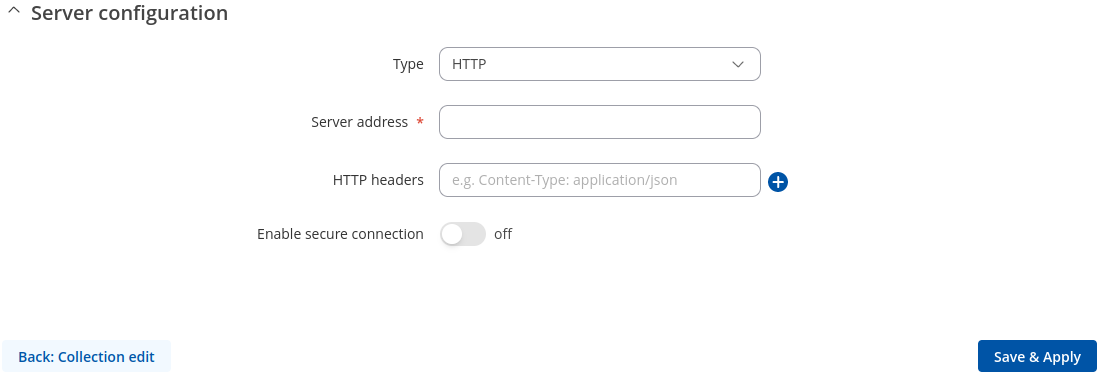Difference between revisions of "Template:Networking rutos manual data to server"
Gytispieze (talk | contribs) |
|||
| (5 intermediate revisions by 4 users not shown) | |||
| Line 1: | Line 1: | ||
<!-- Template uses {{{name}}}, {{{series}}}, {{{bluetooth}}}, {{{wifi}}}--> | <!-- Template uses {{{name}}}, {{{series}}}, {{{bluetooth}}}, {{{wifi}}}--> | ||
| − | {{Template: | + | {{Template: Networking_device_manual_fw_disclosure |
| − | | fw_version ={{Template: | + | | series = {{{series}}} |
| + | | name = {{{name}}} | ||
| + | | fw_version ={{Template: Networking_device_manual_latest_fw | ||
| series = {{{series}}} | | series = {{{series}}} | ||
| name = {{{name}}} | | name = {{{name}}} | ||
}} | }} | ||
}} | }} | ||
| − | {{#ifeq: {{{series}}} | RUT9 |<br><i><b>Note</b>: <b>[[{{{name}}} Modbus (legacy WebUI)#Modbus_Data_to_Server|click here]]</b> for the old style WebUI (FW version {{Template: | + | {{#ifeq: {{{series}}} | RUT9 |<br><i><b>Note</b>: <b>[[{{{name}}} Modbus (legacy WebUI)#Modbus_Data_to_Server|click here]]</b> for the old style WebUI (FW version {{Template: Networking_device_manual_latest_fw | series = RUT9XX}} and earlier) user manual page.</i>|}} |
| − | {{#ifeq: {{{series}}} | RUT2 |<br><i><b>Note</b>: <b>[[{{{name}}} Modbus (legacy WebUI)#Modbus_Data_to_Server|click here]]</b> for the old style WebUI (FW version {{Template: | + | {{#ifeq: {{{series}}} | RUT2 |<br><i><b>Note</b>: <b>[[{{{name}}} Modbus (legacy WebUI)#Modbus_Data_to_Server|click here]]</b> for the old style WebUI (FW version {{Template: Networking_device_manual_latest_fw | series = RUT2XX}} and earlier) user manual page.</i>|}} |
__TOC__ | __TOC__ | ||
==Summary== | ==Summary== | ||
| Line 14: | Line 16: | ||
{{#switch: {{{series}}} | {{#switch: {{{series}}} | ||
| RUTX = | | RUTX = | ||
| + | | RUTM = | ||
| TRB1 = | | TRB1 = | ||
| TRB2 = | | TRB2 = | ||
| Line 20: | Line 23: | ||
<u><b> | <u><b> | ||
| − | Note:</b> On {{{name}}}, Data to Server is additional software that can be installed from the <b> | + | Note:</b> On {{{name}}}, Data to Server is additional software that can be installed from the <b>System → [[{{{name}}} Package Manager|Package Manager]]</b> page. |
</u>}} | </u>}} | ||
| Line 31: | Line 34: | ||
A <b>Data Sender</b> is an instance that gathers and periodically sends collected data to a specified server. The Data Senders list is empty by default so, in order to begin configuration you must add a new data sender first. To add a new data sender, click the 'Add' button. | A <b>Data Sender</b> is an instance that gathers and periodically sends collected data to a specified server. The Data Senders list is empty by default so, in order to begin configuration you must add a new data sender first. To add a new data sender, click the 'Add' button. | ||
| − | [[File: | + | [[File:Networking_rutos_manual_data_to_server_data_senders_add_button_v3.png|border|class=tlt-border]] |
After this you should be redirected to the newly added data sender's configuration page. | After this you should be redirected to the newly added data sender's configuration page. | ||
| − | === | + | ===Sender Settings=== |
---- | ---- | ||
Refer to the table below for descriptions on data sender configuration fields. | Refer to the table below for descriptions on data sender configuration fields. | ||
| Line 41: | Line 44: | ||
<b>Note</b>: these tables have coloring schemes to indicate which fields can be seen with different configuration. | <b>Note</b>: these tables have coloring schemes to indicate which fields can be seen with different configuration. | ||
| − | [[File: | + | [[File:Networking rutos manual data to server data configuration.png|border|class=tlt-border]] |
| − | ==== | + | ====Data configuration==== |
<table class="nd-mantable"> | <table class="nd-mantable"> | ||
| Line 50: | Line 53: | ||
<th>Value</th> | <th>Value</th> | ||
<th>Description</th> | <th>Description</th> | ||
| − | |||
| − | |||
| − | |||
| − | |||
| − | |||
</tr> | </tr> | ||
<tr> | <tr> | ||
| Line 62: | Line 60: | ||
</tr> | </tr> | ||
<tr> | <tr> | ||
| − | <td> | + | <td>Type</td> |
| − | <td><span style="color:red">Modbus | + | <td><span style="color:red">Modbus</span><span style="color:blue">Modbus alarms</span>{{#ifeq:{{{series}}}|RUT36X|<span class="asterisk">*</span>|}}{{#ifeq:{{{series}}}|RUT30X|<span class="asterisk">*</span>|}} {{#ifeq:{{{bluetooth}}}|1|<nowiki>|</nowiki> <span style="color:green">Bluetooth data</span> |}} {{#ifeq:{{{wifi}}}|1|<nowiki>|</nowiki> WiFi scanner data{{#ifeq: {{{series}}} | RUTX | | <span class="asterisk">*</span>}}|}} | <span style="color:magenta">DNP3</span><span class="asterisk">*</span> {{!}} DNP3 data flash<span class="asterisk">*</span>; default: <b>Modbus data</b></td> |
<td>Source of the data to be sent to server.</td> | <td>Source of the data to be sent to server.</td> | ||
</tr> | </tr> | ||
<tr> | <tr> | ||
| − | <td> | + | <td>Format type</td> |
| − | <td> | + | <td>Json, custom; default: <b>Json</b></td> |
| − | + | <td>Arranges the format of the sent segment.</td> | |
</tr> | </tr> | ||
<tr> | <tr> | ||
<td>JSON format</td> | <td>JSON format</td> | ||
| − | <td>string; default: < | + | <td>string; default: <b>{"TS": "%t", "D": "%d", "data": %a}</b></td> |
<td>Arranges the format of the sent JSON segment.</td> | <td>Arranges the format of the sent JSON segment.</td> | ||
</tr> | </tr> | ||
| Line 85: | Line 83: | ||
<td>off | on; default: <b>off</b></td> | <td>off | on; default: <b>off</b></td> | ||
<td>When turned on, sends JSON segment as object and not as an array element.</td> | <td>When turned on, sends JSON segment as object and not as an array element.</td> | ||
| − | |||
| − | |||
| − | |||
| − | |||
| − | |||
| − | |||
| − | |||
| − | |||
| − | |||
| − | |||
</tr> | </tr> | ||
<tr> | <tr> | ||
| Line 149: | Line 137: | ||
<br> | <br> | ||
| − | + | ====Collection general settings==== | |
| − | ==== | + | ---- |
| + | |||
| + | [[File:Networking rutos manual data to server collection configuration general settings.png|border|class=tlt-border]] | ||
<table class="nd-mantable"> | <table class="nd-mantable"> | ||
| Line 159: | Line 149: | ||
</tr> | </tr> | ||
<tr> | <tr> | ||
| − | <td> | + | <td>Enable</td> |
| − | <td> | + | <td>on, off; default: <b>on</b></td> |
| − | <td> | + | <td>Enables instance.</td> |
</tr> | </tr> | ||
| − | + | <tr> | |
| − | <td> | + | <td>Type</td> |
| − | <td> | + | <td><span style="color:red">Json</span>, <span style="color:blue">custom</span>; default: <b>Json</b></td> |
| − | + | <td>Data input type.</td> | |
</tr> | </tr> | ||
<tr> | <tr> | ||
| − | <td><span style="color:red"> | + | <td><span style="color:red">Json</span></td> |
| − | <td> | + | <td>string; default: <b>{"TS": "%t", "D": "%d", "data": %a}</b></td> |
| − | + | <td>Arranges the format of the sent JSON segment.</td> | |
</tr> | </tr> | ||
<tr> | <tr> | ||
| − | <td><span style="color: | + | <td><span style="color:blue">custom</span></td> |
| − | <td> | + | <td>string; default: <b>empty</b></td> |
| − | + | <td>Type of data formatting.</td> | |
| − | </tr> | + | </tr> <tr> |
| − | + | <td><span style="color:blue">Empty value</span></td> | |
| − | + | <td>string; default: <b>N/A</b></td> | |
| − | + | <td>A string which will be placed if any value cannot be received.</td> | |
| − | |||
| − | |||
| − | |||
| − | |||
| − | |||
| − | <td> | ||
</tr> | </tr> | ||
</table> | </table> | ||
| − | + | ||
| − | ==== | + | ====Collection advanced settings==== |
| + | ---- | ||
| + | |||
| + | [[File:Networking rutos manual data to server collection configuration advanced settings.png|border|class=tlt-border]] | ||
<table class="nd-mantable"> | <table class="nd-mantable"> | ||
| Line 199: | Line 186: | ||
</tr> | </tr> | ||
<tr> | <tr> | ||
| − | + | <td>Period</td> | |
| − | + | <td>integer [1..86400]; default: <b>60</b></td> | |
| − | + | <td>Data sending frequency (in seconds).</td> | |
</tr> | </tr> | ||
<tr> | <tr> | ||
| − | + | <td>Retry</td> | |
| − | + | <td>off | <span style="color:darkgreen">on</span>; default: <b>off</b></td> | |
| − | + | <td>When turned on, the data sender retries failed sending attempts until the are successfully delivered.</td> | |
| − | |||
| − | |||
| − | |||
| − | |||
| − | |||
| − | |||
| − | |||
| − | |||
| − | |||
| − | |||
| − | |||
| − | |||
| − | |||
| − | |||
| − | |||
| − | |||
| − | |||
| − | |||
| − | |||
| − | |||
| − | <td> | ||
| − | <td>off | <span style="color: | ||
| − | |||
| − | |||
| − | |||
| − | |||
| − | <td> | ||
| − | |||
</tr> | </tr> | ||
<tr> | <tr> | ||
| − | <td><span style="color: | + | <td><span style="color:darkgreen">Retry count</span></td> |
| − | <td>. | + | <td>integer [1..10]; default: <b>10</b></td> |
| − | <td> | + | <td>Retry to send the same data N times.</td> |
</tr> | </tr> | ||
<tr> | <tr> | ||
| − | + | <td><span style="color:darkgreen">Timeout</span></td> | |
| − | + | <td>integer [1..60]; default: <b>1</b></td> | |
| − | + | <td>Timeout in second between retry attempts.</td> | |
| − | |||
| − | |||
| − | |||
| − | |||
| − | |||
| − | |||
| − | |||
| − | |||
| − | |||
| − | |||
| − | |||
| − | |||
| − | |||
| − | |||
| − | |||
| − | |||
| − | |||
| − | <td> | ||
| − | |||
| − | <td> | ||
| − | |||
| − | |||
| − | |||
| − | |||
| − | |||
| − | |||
| − | |||
| − | |||
| − | |||
| − | <td> | ||
</tr> | </tr> | ||
</table> | </table> | ||
| − | + | ||
| − | ==== | + | ====Server configuration==== |
| + | ---- | ||
| + | |||
| + | [[File:Networking rutos manual data to server server configuration.png|border|class=tlt-border]] | ||
<table class="nd-mantable"> | <table class="nd-mantable"> | ||
| Line 286: | Line 218: | ||
<th>Description</th> | <th>Description</th> | ||
</tr> | </tr> | ||
| − | + | <tr> | |
| − | <td> | + | <td>Protocol</td> |
| − | <td> | + | <td>HTTP(S) | MQTT{{#ifeq: {{{series}}} | RUTX || <span class="asterisk">*</span>}} | Kinesis; default: <b>HTTP(S)</b></td> |
| − | <td> | + | <td>Protocol used for sending the data to server.</td> |
</tr> | </tr> | ||
| − | + | <tr> | |
| − | <td> | + | <td>Server address</td> |
<td>string; default: <b>none</b></td> | <td>string; default: <b>none</b></td> | ||
| − | <td> | + | <td>URL for HTTP(S); Host for MQTT; Connection string for Azure MQTT.</td> |
| − | |||
| − | |||
| − | |||
| − | |||
| − | |||
</tr> | </tr> | ||
<tr> | <tr> | ||
| − | <td> | + | <td>HTTP Header</td> |
<td>string; default: <b>none</b></td> | <td>string; default: <b>none</b></td> | ||
| − | <td> | + | <td>Allows to add custom headers to the HTTP requests.</td> |
</tr> | </tr> | ||
<tr> | <tr> | ||
| − | + | <td>Enable secure connection</td> | |
| − | + | <td><span style="color:chocolate">on</span>, off; default: <b>off</b></td> | |
| − | + | <td>Enables use of TLS certificates</td> | |
</tr> | </tr> | ||
<tr> | <tr> | ||
| − | + | <td>Certificate files from device</td> | |
| − | + | <td>on, off; default: <b>off</b></td> | |
| − | + | <td>Choose this option if you want to select certificate files from device.</td> | |
</tr> | </tr> | ||
<tr> | <tr> | ||
| − | + | <td><span style="color:chocolate">Certificate based:</span> CA File</td> | |
| − | |||
| − | |||
| − | |||
| − | |||
| − | |||
| − | |||
| − | |||
| − | |||
| − | |||
| − | <td><span style="color: | ||
| − | |||
| − | |||
| − | |||
| − | |||
| − | |||
<td>.ca file; default: <b>none</b></td> | <td>.ca file; default: <b>none</b></td> | ||
<td>'''Certificate authority''' is an entity that issues digital certificates. A digital certificate certifies the ownership of a public key by the named subject of the certificate.</td> | <td>'''Certificate authority''' is an entity that issues digital certificates. A digital certificate certifies the ownership of a public key by the named subject of the certificate.</td> | ||
</tr> | </tr> | ||
<tr> | <tr> | ||
| − | <td><span style="color: | + | <td><span style="color:chocolate">Certificate based:</span> Client Certificate</td> |
<td>.crt file; default: <b>none</b></td> | <td>.crt file; default: <b>none</b></td> | ||
<td>Certificate file is a type of digital certificate that is used by client systems to make authenticated requests to a remote server. If client certificate is not needed, leave both client certificate and client key fields empty.</td> | <td>Certificate file is a type of digital certificate that is used by client systems to make authenticated requests to a remote server. If client certificate is not needed, leave both client certificate and client key fields empty.</td> | ||
</tr> | </tr> | ||
<tr> | <tr> | ||
| − | <td><span style="color: | + | <td><span style="color:chocolate">Certificate based:</span> Private Key</td> |
<td>.key file; default: <b>none</b></td> | <td>.key file; default: <b>none</b></td> | ||
<td>File containing private key for this client. This file needs to be not encrypted.</td> | <td>File containing private key for this client. This file needs to be not encrypted.</td> | ||
</tr> | </tr> | ||
</table> | </table> | ||
| + | |||
| + | <span class="asterisk">*</span> This is additional software that can be installed from the <b>System → [[{{{name}}} Package Manager|Package Manager]]</b> page. | ||
[[Category:{{{name}}} Services section]] | [[Category:{{{name}}} Services section]] | ||
Revision as of 12:41, 18 December 2023
The information in this page is updated in accordance with firmware version .
Summary
The Data to Server feature provides you with the possibility to set up data senders that collect data from various sources and periodically send it to remote servers.
Note: On {{{name}}}, Data to Server is additional software that can be installed from the System → [[{{{name}}} Package Manager|Package Manager]] page.
If you're having trouble finding this page or some of the parameters described here on your device's WebUI, you should turn on "Advanced WebUI" mode. You can do that by clicking the "Advanced" button, located at the top of the WebUI.
Data Senders
A Data Sender is an instance that gathers and periodically sends collected data to a specified server. The Data Senders list is empty by default so, in order to begin configuration you must add a new data sender first. To add a new data sender, click the 'Add' button.
After this you should be redirected to the newly added data sender's configuration page.
Sender Settings
Refer to the table below for descriptions on data sender configuration fields.
Note: these tables have coloring schemes to indicate which fields can be seen with different configuration.
Data configuration
| Field | Value | Description |
|---|---|---|
| Name | string; default: none | Name of the data sender. Used for easier data senders management purposes only (optional). |
| Type | ModbusModbus alarms | DNP3* | DNP3 data flash*; default: Modbus data | Source of the data to be sent to server. |
| Format type | Json, custom; default: Json | Arranges the format of the sent segment. |
| JSON format | string; default: {"TS": "%t", "D": "%d", "data": %a} | Arranges the format of the sent JSON segment. |
| Segment count | integer [1..10]; default: 1 | Max segment count in one JSON string sent to server. |
| Send as object | off | on; default: off | When turned on, sends JSON segment as object and not as an array element. |
| Data filtering | All data | By slave ID | By slave IP; default: All data | If Data source: Modbus data. Choose which data this sender will send to server. |
| By slave ID: Slave ID | integer [1..255]; default: none | ID of the Modbus slave whose collected data will be sent to server. |
| By slave IP: Slave IP | ip; default: none | IP address of the Modbus slave whose collected data will be sent to server (for Modbus TCP slaves). |
| Data filtering | All data | DNP3 Address | DNP3 IP; default: All data | If Data source: DNP3. Choose which data this sender will send to server. |
| DNP3 Address: DNP3 Address | integer [0..65519]; default: none | DNP3 address of device whose collected data will be sent to server. |
| DNP3 IP: DNP3 IP | ip | domain; default: none | IP address of DNP3 device whose collected data will be sent to server. |
| Retry on fail | off | on; default: off | When turned on, the data sender retries failed sending attempts until the are successfully delivered. |
Collection general settings
| Field | Value | Description |
|---|---|---|
| Enable | on, off; default: on | Enables instance. |
| Type | Json, custom; default: Json | Data input type. |
| Json | string; default: {"TS": "%t", "D": "%d", "data": %a} | Arranges the format of the sent JSON segment. |
| custom | string; default: empty | Type of data formatting. |
| Empty value | string; default: N/A | A string which will be placed if any value cannot be received. |
Collection advanced settings
| Field | Value | Description |
|---|---|---|
| Period | integer [1..86400]; default: 60 | Data sending frequency (in seconds). |
| Retry | off | on; default: off | When turned on, the data sender retries failed sending attempts until the are successfully delivered. |
| Retry count | integer [1..10]; default: 10 | Retry to send the same data N times. |
| Timeout | integer [1..60]; default: 1 | Timeout in second between retry attempts. |
Server configuration
| Field | Value | Description |
|---|---|---|
| Protocol | HTTP(S) | MQTT* | Kinesis; default: HTTP(S) | Protocol used for sending the data to server. |
| Server address | string; default: none | URL for HTTP(S); Host for MQTT; Connection string for Azure MQTT. |
| HTTP Header | string; default: none | Allows to add custom headers to the HTTP requests. |
| Enable secure connection | on, off; default: off | Enables use of TLS certificates |
| Certificate files from device | on, off; default: off | Choose this option if you want to select certificate files from device. |
| Certificate based: CA File | .ca file; default: none | Certificate authority is an entity that issues digital certificates. A digital certificate certifies the ownership of a public key by the named subject of the certificate. |
| Certificate based: Client Certificate | .crt file; default: none | Certificate file is a type of digital certificate that is used by client systems to make authenticated requests to a remote server. If client certificate is not needed, leave both client certificate and client key fields empty. |
| Certificate based: Private Key | .key file; default: none | File containing private key for this client. This file needs to be not encrypted. |
* This is additional software that can be installed from the System → [[{{{name}}} Package Manager|Package Manager]] page.
[[Category:{{{name}}} Services section]]

